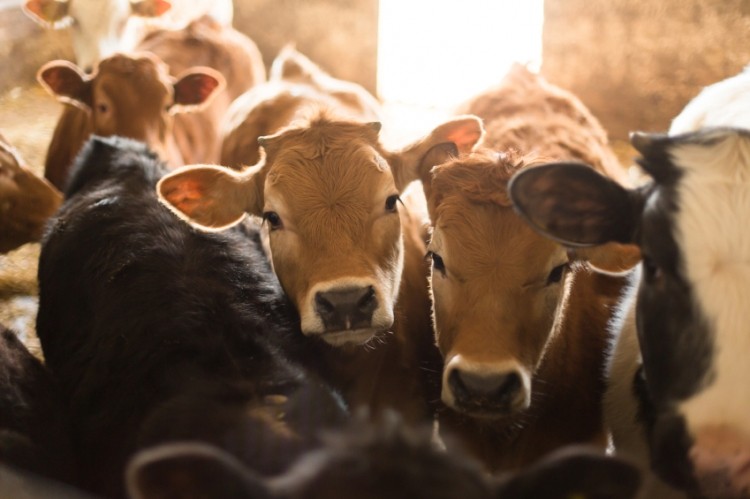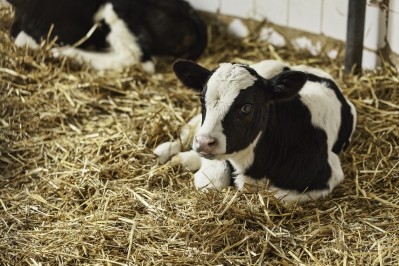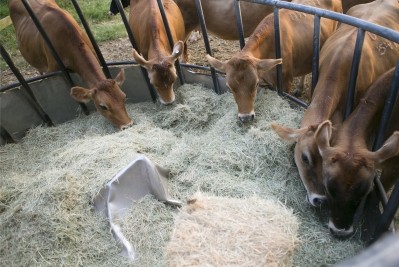Dairy calf growth, rumen development boosted by high milk and forage diet says Canadian team

Their research sought to determine the effects from multiple feed types and presentations in the first 12 weeks on the feeding behavior, intake and growth for calves fed a high milk diet.
The ideal diet would be one that would enable an easy transition from liquid to solid feed and avoid body weight loss.
“The goal of the present study was to determine the optimal solid feeding strategy for minimizing the negative effects of weaning,” they said. “This target was achieved by all calves fed only concentrate or a mixture of hay and concentrate, but calves fed a silage-based TMR [total mixed ration] failed to attain this goal.”
Feed mixture details
They hypothesized that incorporating a silage-based TMR into the diets of calves fed high levels of milk before weaning would have no detrimental effects on calf growth and result in a positive effect on feeding behavior. Similarly, it was hypothesized that calves fed diets including forage would exhibit more rumination behavior.
Previous research has suggested that giving more milk to dairy calves can boost growth rate and possibly result in healthier animals producing more milk, said the scientists. “Despite implementation of gradual weaning programs, a decrease in overall [dry matter intake] DMI is an issue for high-milk-fed calves,” they added.
The addition of forage feeds, like hay, may improve intake and rumen development, said researchers. And the size of forage material also may influence rumen development.
Additionally, the use of a silage-based total mixed ration (TMR) is of interest in dairy calves as it would be easily available and would provide a nutrient source for the developing rumen.
Experiment details
In the experiment, 48 calves were given one of four diets – silage-based total mixed ration (TMR), a textured dairy starter concentrate (CON), chopped hay mixed with the concentrate (MIX) and chopped hay with the concentrate but unmixed (SEP) – for 12 weeks, said scientists.
All calves also received 12L/d of acidified milk replacer until day 38 when the amount was reduced by 1L/d until day 50 when no calves were given milk, they said. Also on day 50, calves on SEP and CON diets were given the MIX diet through the end of the trial, though calves on MIX or TMR did not have the ration changed.
Calves were weighed twice a week and daily feed intake was recorded, they said. Average daily gain (ADG) was calculated and the gain-to-feed ratio established.
Rumination time was recorded in three-day blocks on alternating weeks and the time spent feeding was established for the last two days of every other week, said researchers. Blood beta-hydroxybutyrate (BHB) concentration was measured to assess rumen development.
Results
In the early part of the experiment, days 1-37, ADG was similar for all the calves, though those getting the TMR ration had lower weight gain and a lower gain-to-feed ratio during the pre-weaning and weaning stages of the experiment, said the researchers. Post-weaning the TMR group had an ADG of 0.7 kg/d compared to 1.2kg/d for the other three groups.
“This result is related to the lower dry matter intake of calves fed TMR in comparison with MIX, SEP, and CON calves in the weaning (0.2 vs. 0.5 kg/d) and post-weaning (1.8 vs. 2.8 kg/d) stages,” they said. “Given dry matter content of the feeds (TMR = 52%, other diets = 89%), the as-fed intake of the calves was similar across treatments in all 3 stages.”
Calves given hay and the concentrate had the same intake of concentrate for the first seven weeks, said researchers.
Calves getting TMR had a slower feeding rate and longer feeding time post-weaning than any of the other groups, they said. The difference was about 308 minutes to 194 minutes.
“It appears that during weaning, and post-weaning, calves fed TMR were attempting to maximize their nutrient intake but were unable to match that of calves in other treatments because of the high moisture content of their feed, and thus were unable to achieve similar average daily gain,” they said.
Additionally, growth and total intake throughout the pre-weaning and weaning stages were similar for calves fed chopped hay along with concentrate and those not offered hay, suggesting no detrimental effect of feeding forage, said the Canada based team.
No difference was seen in BHB concentration for the pre-weaning or weaning stages, though the concentration did increase over time, added the researchers.
Source: Journal of Dairy Science
Title: Effect of feed type and method of presentation on feeding behavior, intake and growth of dairy calves fed a high level of milk
DIO: 10.3168/jds.2015-9997
Authors: MA Overvest, R Bergeron, DB Haley, TJ DeVries












